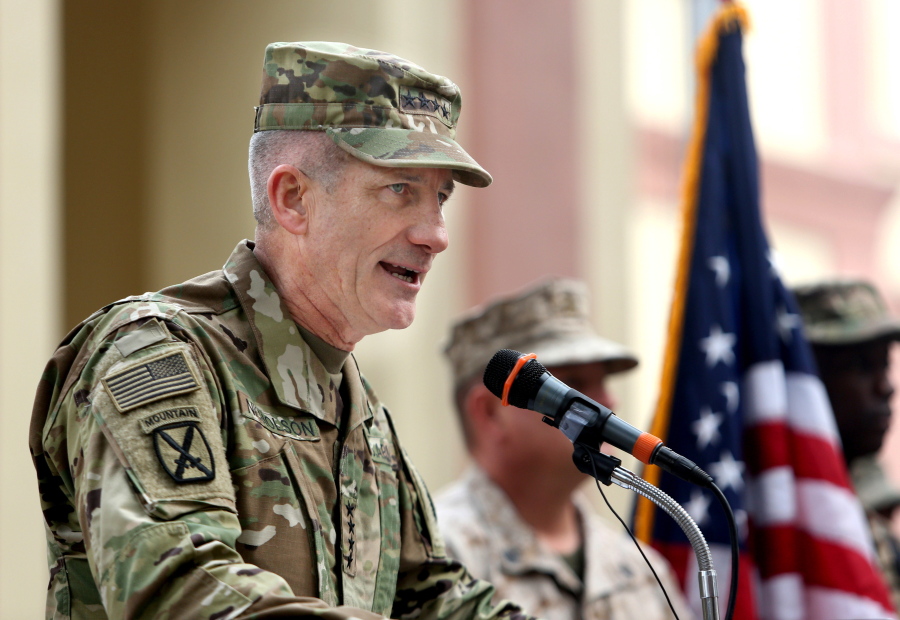KABUL, Afghanistan — The new U.S. commander in Afghanistan has submitted his first three-month assessment of the situation in the war-torn country and what it’s going to take to defeat the Taliban, a U.S. military official has told The Associated Press.
And though the content of the review by U.S. Army Gen. John W. Nicholson is secret, the U.S. strategy in Afghanistan received a major incentive this month when President Barack Obama decided to expand America’s involvement with more airstrikes against insurgents, giving the U.S. military wider latitude to support Afghan forces, both in the air and on the ground.
The report — and Nicholson’s deployment to Afghanistan — come at a time of Taliban resurgence, with the group gaining ground in the southern provinces of the Taliban heartland.
After 90 days in the country, Nicholson has now “completed his assessment and submitted it to his chain of command at the Pentagon,” said a U.S. military official in Afghanistan.
Since all foreign combat troops pulled out of Afghanistan at the end of 2014, leaving only an advisory and training contingent of international forces behind, the Afghan military has struggled in leading the fight, its 195,000 soldiers learning as they go.
The 9,800 remaining U.S. troops in Afghanistan are scheduled to drop to 5,500 by the end of this year, but the pace of that decline has yet to be decided. One factor in determining future troop levels is the extent to which NATO allies are willing to remain involved in training and advising the Afghans.
That is likely to figure prominently in Nicholson’s review, which is widely expected to include a recommendation for more U.S. soldiers to boost training.
Nicholson took over the Afghanistan command in March and has since traveled across the country to meet Afghan soldiers on the front lines and gauge their most pressing needs. Earlier, he had already served more than three years in the country, but not as top commander.
His review is also expected to look at the current threat level from various insurgent groups operating in Afghanistan, assess resources to deal with that threat, and look at current and future operational needs. It’s likely to take into account every aspect of the Afghan military’s preparedness — from operational capability and training needs at all levels, to fundamentals like equipment, facilities, maintenance and logistics, discipline and accountability.
The Taliban’s warm-weather offensive has shown the insurgents to be bolder and better organized, holding more territory now than at any time since 2001, when their regime was overthrown by the U.S.-led invasion, according to recent U.N. estimates.



